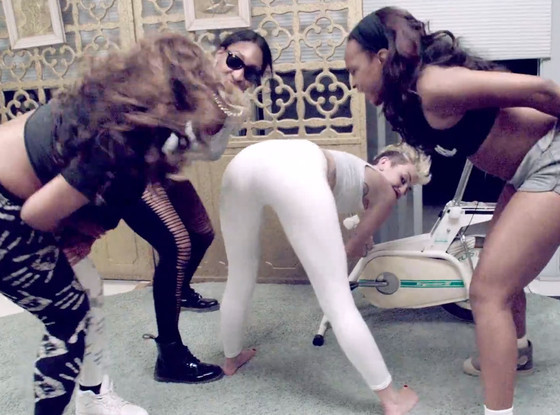“Seen through the eyes of the drag queens, the white middle-class woman emerges as a rather more powerful figure than she is within a feminist discourse that attends only to her gender. Their fantasies render her whiteness, and its association with class privilege, more visible."
- Ann Cvetkovich
In her article, The Powers of Seeing and Being Seen, Ann Cvetkovich highlights the racial implications within Madonna’s transformative image. By cross-dressing, both Madonna in Truth or Dare (1991) and the black and Latino drag queens in Paris is Burning (1991) show how gender is a social performance. However, the drag queens see cross-dressing as a way to embody white womanhood and the higher class status associated with it. In a post-Stonewall world in which gays still face violence and abuse (Venus Xtravaganza of Paris is Burning was found murdered two years before the film released), the combination of cross-dressing, being gay, and being a minority puts individuals at a dangerous risk. Since Madonna is a white, upper-class celebrity, she can circumvent the inequities associated with being gay and appropriate aspects of gay culture with relative ease.
Madonna also appropriates racial imagery to foreground herself as sensual and soulful. For example, hooks points out that the music video for Like a Prayer (1989) uses imagery of the black church culture to provide the emotional background of her sexual experience with a black saint.
I find it strange how the subplot of this video is about a black man that is falsely accused of assaulting a white woman. Madonna sees the truth and knows he is innocent, but the black man is still taken to jail. The black man’s story is never resolved, however, because he is not the focus of the video. It’s about all about Madonna and how she feels, as a white woman, about the events that she witnessed. Like a Prayer serves as another example of how black culture is used to foreground the white experience. In this way, Madonna can appear as a pure, white girl getting a taste of being black without having to deal with the actual implications of things like racism and racial profiling.
A modern day example of white womanhood reinventing itself through cultural appropriation is Miley Cyrus. Originally introduced to the world as Disney Channel’s Hannah Montana, Cyrus first attempted to break out of her wholesome image with her third studio album, Can’t Be Tamed (2010). Far from the twerking Miley we know today, her Can’t Be Tamed image attempts to make her appear less sophisticated, less rich, and more wild while still retaining her essential whiteness.
For example, Cyrus’ Can’t Be Tamed music video establishes a dichotomy between the singer and the upper-class. An announcer introduces her as a ferocious creature behind a cage. Rich couples in expensive gowns and tuxedos look on at Cyrus in amazement. When she starts dancing -- grinding, pelvic thrusts, and suggestive poses -- it’s clear that she’s locked away due to her uncivilized sexuality.
This first attempt at reinvention failed because how much audiences knew about Cyrus’ private life. She’s the daughter of Billy Ray Cyrus, a successful country singer. Miley was on television at the age of 11, and has enjoyed a lavish lifestyle ever since. While the singer attempts to establish a divide between herself and the upper-class, audiences got the impression that the divide was purely fictional because she held on to her white girl image.
Protecting Miley's whiteness is exemplified in another music video from the Can’t Be Tamed album, Who Owns My Heart. Again, the video wrestles with the image of wholesome Miley and wild Miley. In the video, she awakes in a lavish mansion, which is presumably her own. Her time singing in bed is intercut with scenes of her in a high-class club where all of the patrons are young models wearing designer clothing. Miley dances wildly and sexually in the club. At the end of the video, however, Miley is reconfigured as a good girl. She again awakens in her lavish mansion and it turns out that the scenes at the club were nothing but fantasy in her mind. Who Owns My Heart suggests that while Miley is growing more sexually mature and promiscuous, she is still the innocent Disney princess locked away in a high tower.
Can’t Be Tamed went on to be Cyrus’ lowest-peaking and lowest-selling record. For her next attempt at reinvention, Cyrus felt the need to shed every ounce of innocence that was left over from her Hannah Montana image, which involved letting go of her whiteness and instead appropriating black culture.
Enter modern day Miley, which seems to be her most popular image yet. In the beginning of the music video for We Can’t Stop (2013), Miley “reinvents” herself by putting on big jewelry and a gold grill. Immediately, we can see how black culture becomes a costume that Cyrus can wear and “change” into. The line, “To my home girls here with the big butt/shaking it like we at a strip club” accentuates the “twerking” dance maneuver that Cyrus borrows from black strippers. Visually, three black girls surround Miley (who wears a pure white outfit) as if in approval of this “white girl gone bad”. Like Madonna before her, however, Miley plays with the idea of being a black stripper without having to deal with the race and class implications associated with it. We Can't Stop isn't about black culture, but about a white girl's journey to be more dirty, wild, and sexual by copying low class aspects of black culture.
- Michael Francisco

No comments:
Post a Comment
Note: Only a member of this blog may post a comment.